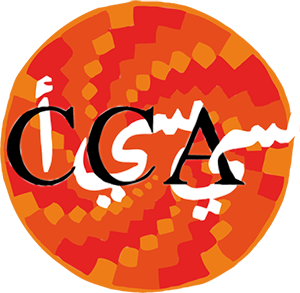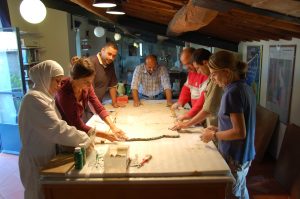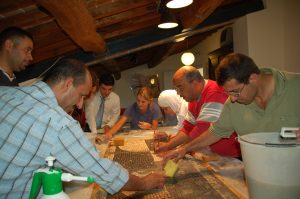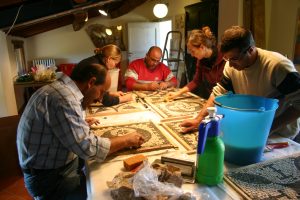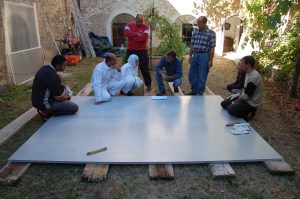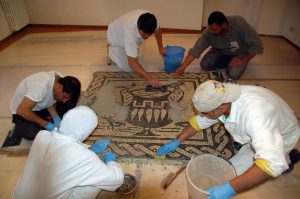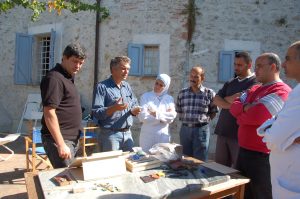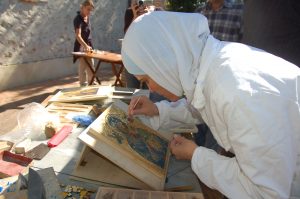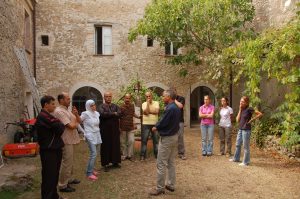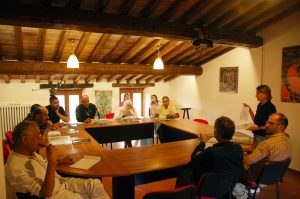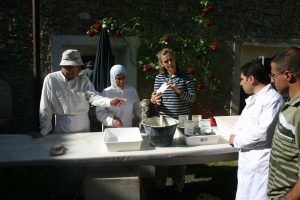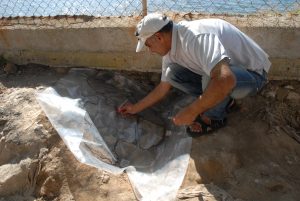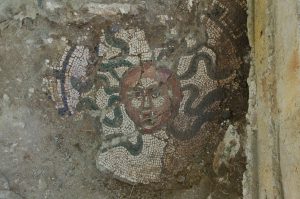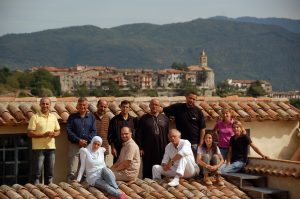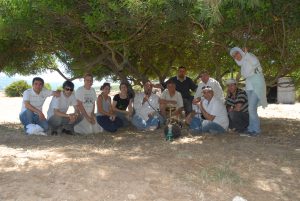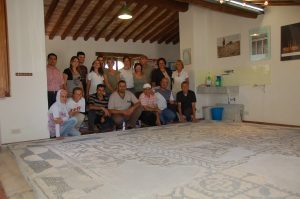Treatment of the Quadraro Mosaic
Laboratory practice focused on the treatment of a black and white mosaic from the roman villa of Quadraro, Rome, kindly made available by the Museo delle Terme of Rome. The artifact had been cut and lifted from site in 67 pieces, with gauze applied to its front. During the two course modules participants completed the reassembly of the fragments on a movable support. They also gained experience of making lime based hydraulic mortars and preparing honeycomb aluminum panels to create a new support.
The first step was to document the condition of the fragments and collect information on the artifact’s history. The pieces were photographed face down, oriented to fit together and numbered. After cleaning the reverse side, participants applied a layer of clay as a temporary support and assembled the fragments together. A wooden frame was built around the pieces to keep them in place. The old textile was removed from the front, which was then cleaned with water and brushes. Small lacunae were integrated using detached tesserae, which were pushed into the clay.
A new facing, consisting in cotton gauze adhered with a flour-based paste, was applied to the reassembled mosaic. This had the purpose of keeping the tesserae in place during the new cutting operation. In fact, the mosaic was to be newly sectioned into several parts, so that it could be stored and transported with ease. The new cuts were planned so as to follow the tesserae lines and result visually unobtrusive. The cutting lines were drawn on the facing, and the fragments numbered. Once cut, the pieces were turned over and the clay removed from the back.
The aluminum honeycomb support was then cut into the exact shape of the mosaic parts. Grains of expanded clay were adhered to the support panels using an epoxy resin. This had the purpose of providing a rough surface to which the mortar could adhere strongly. Participants then prepared a thick hydraulic lime mortar and used it to cover the central support panel. An aluminum strip placed around the edge of the panel was used to contain the mortar. A thinner mortar was applied to the back of the mosaic pieces, which were then turned over and positioned on the panel. The pieces were pushed into the mortar bedding and leveled.
Once the central panel was complete, participants wetted the temporary facing to remove it, and scrubbed the surface of the fragments clean. Honeycomb panel number 2, also covered in mortar, was then placed next to the completed, central panel, the two separated by a thin aluminum strip. Other fragments were placed on panel 2 in the same way, and the operation was repeated until all the panels had been reassembled.
The final treatment phase consisted in integrating smaller lacunae using detached tesserae, which were pressed into the mortar bed, and polishing the mortar in the larger lacunae. Final cleaning and documentation completed the project.
